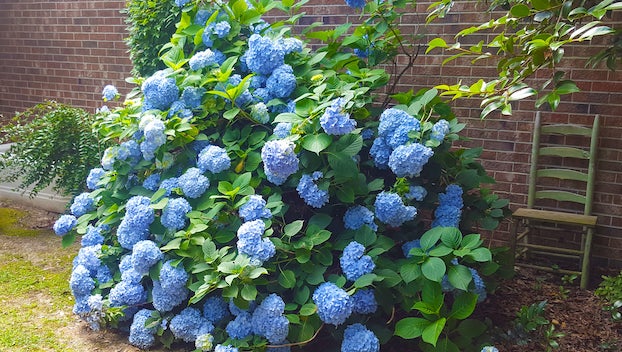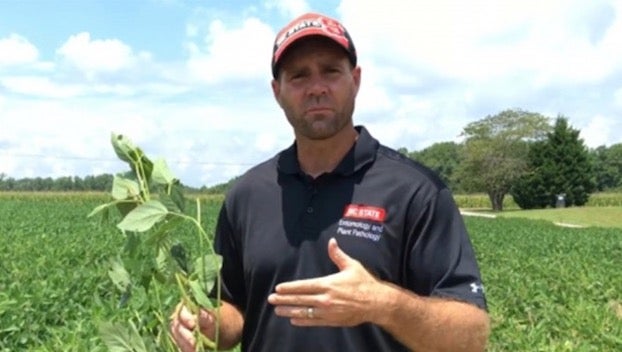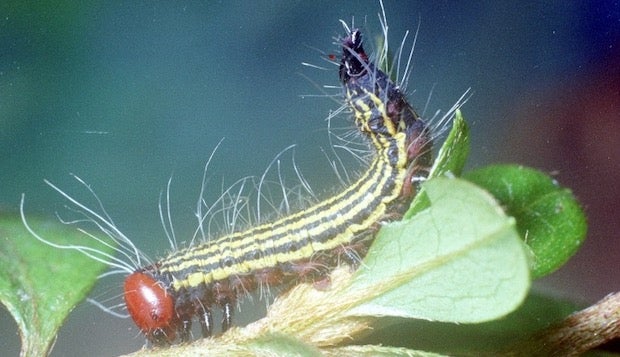Dishing the Dirt: How do I get my Hydrangeas to be blue?
Published 4:33 pm Friday, June 17, 2022
|
Getting your Trinity Audio player ready...
|
We have all seen them, those beautifully blue mopheads in our neighbor’s garden. So, how do they get them to be blue? First, you need to make sure you have a species that will turn blue.
There are several types of hydrangeas that will grow well in your home landscape. There is the native Oak Leaf Hydrangea (Hydrangea quercifolia) that has amazing fall foliage and enormous spring blooms. As the season progresses, the blooms turn a copper color. Another is the common cultivar ‘Limelight’, this is the H. paniculata. There is the climbing Hydrangea, H. anomala, that grows like a vine to fill-in a trellis. We also have a Hydrangea native to the Eastern United States, the smooth or wild hydrangea (H. arborescens). However, all of these species’ flower color is dependent upon the cultivar and/or season.
There are two species that you can manipulate the flower color with, these are the Mountain Hydrangea (H. serrata) or the Big Leaf, Mop Head, or French Hydrangea (H. macrophylla). As you can see, sometimes it is much easier to know the scientific name than to keep up with all of the common names! The mountain hydrangea is a smaller version of the big leaf. It is native to Korea and Japan but grows in USDA Hardiness zones 6-9. This species generally works better in the Mountains and Piedmont of NC. As such, it is less common than the big leaf hydrangea in home gardens.
The macrophylla is probably the most common in home landscapes. This is typically considered one of the hallmarks of a southern garden. Native to Japan, it too works well in USDA Hardiness zones 6-9. The macrophylla blooms in late spring on last year’s wood so make sure not to winter prune. Instead, prune these plants right after bloom just to keep the plant in shape. It has a mound shape growing habit that rarely needs pruning. This plant likes a mix of morning sun and afternoon shade.
So, we know what species we need to get those beautiful blue flowers but how do we get them? Are yours typically pink to purple? It has everything to do with the pH of the soil. When the pH is higher, we will get purple to pink flowers. Purple flowers mean you are in the 5.5 – 6.5 range, pink flowers mean you are above 6.5 pH in most cases. Blue flowering is only possible in the 5.0 – 5.5 range (in mineral soils). Soil pH is one of the most important factors in growing any plant well. Not all plants like the same pH and some provide different results at different pH levels. This is because nutrients are only available to the plant at a certain pH range. For example, blossom end-rot in tomatoes can usually be traced back to a low pH. This is because a low pH chemically ties up Calcium such that it isn’t available to the plant. In much the same way, our blue flowers are tied to low pH because the element Aluminum is only available at a lower pH. The Aluminum is what is actually causing the blue flowering.
If you’ve had pink or purple flowers on your mop heads in the past, you will need to do two things to get those beautiful blue flowers. First, you will need to make sure your pH is within the correct range of 5.0 – 5.5 in mineral soils. Second, you need supply aluminum to the soil through fertilizer application.
You can check the pH of your soil by sending a soil sample off to the NCDA&CS Agronomic lab. You can use one of the home test kits available at local hardware stores too. While not a foolproof test of pH, this will give you an idea of where you are. Elemental Sulfur, also available at local hardware stores, will lower the pH of the soil very quickly. It is important not to overdo it! Using 2.5 lbs. of elemental sulfur per 100 square feet will lower soil pH from 6.0 to 5.0 in a silt loam soil. For sandy soils, reduce this amount by 1/3, in clay soils, increase this amount by 1/2.
Using Aluminum Sulfate will be a little more forgiving if you don’t get it just right. However, this will take much more product to bring the pH down that much (multiply the elemental sulfur number by a factor of 6.9). However, aluminum sulfate is a fertilizer that will supply the necessary aluminum to change your flower color, this is the second part of the beautiful blue flower equation. Once your pH is in the correct range, using aluminum sulfate will ensure it stays within that range.
If you have horticulture a question, call the Extension Master Gardener Volunteers in Beaufort County or Gene Fox, the Area Consumer Horticulture agent at (252)946-0111 or please email Gene at gene_fox@ncsu.edu. Our Extension Master GardenerSM Volunteers in Beaufort County offer their Greenline service on Mondays and Wednesday from 10:00 – 12:00. Give us a call and let us help you GROW!






